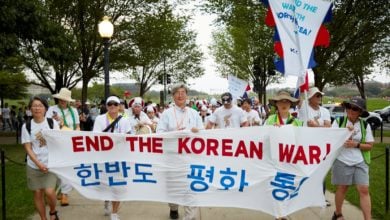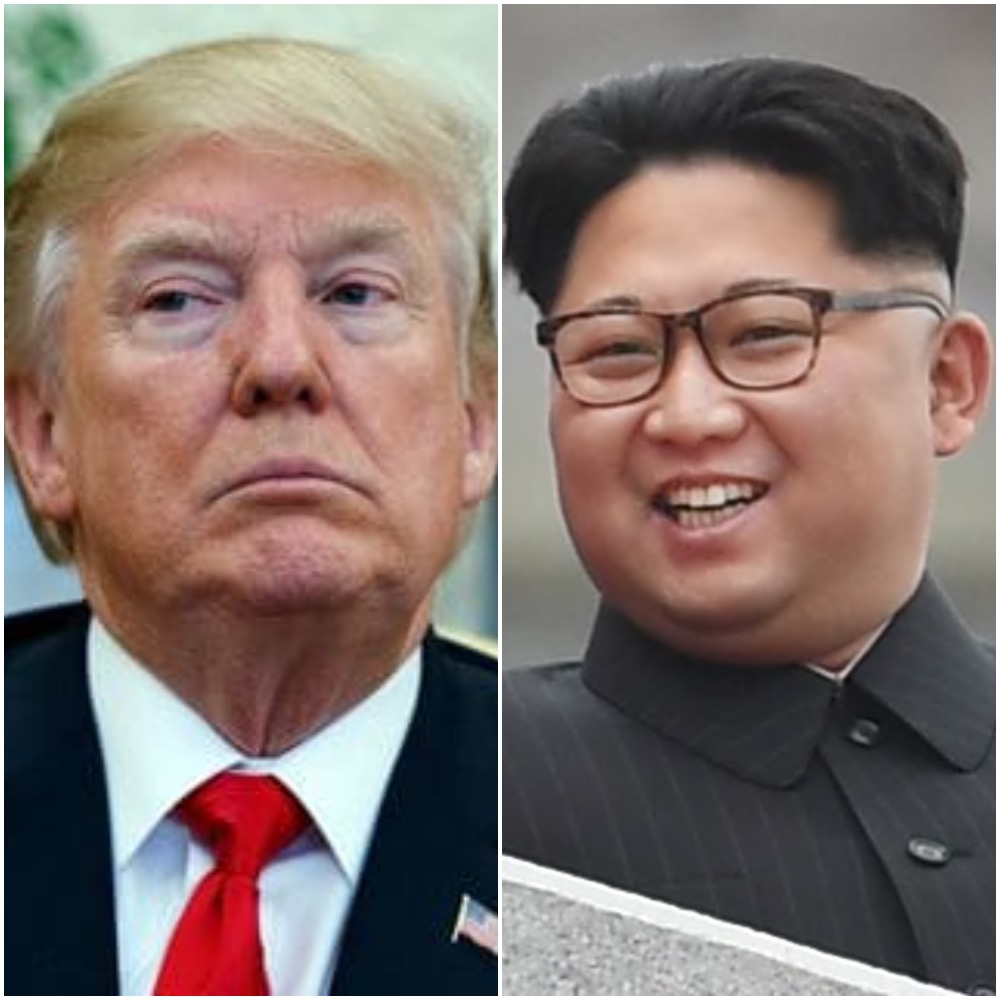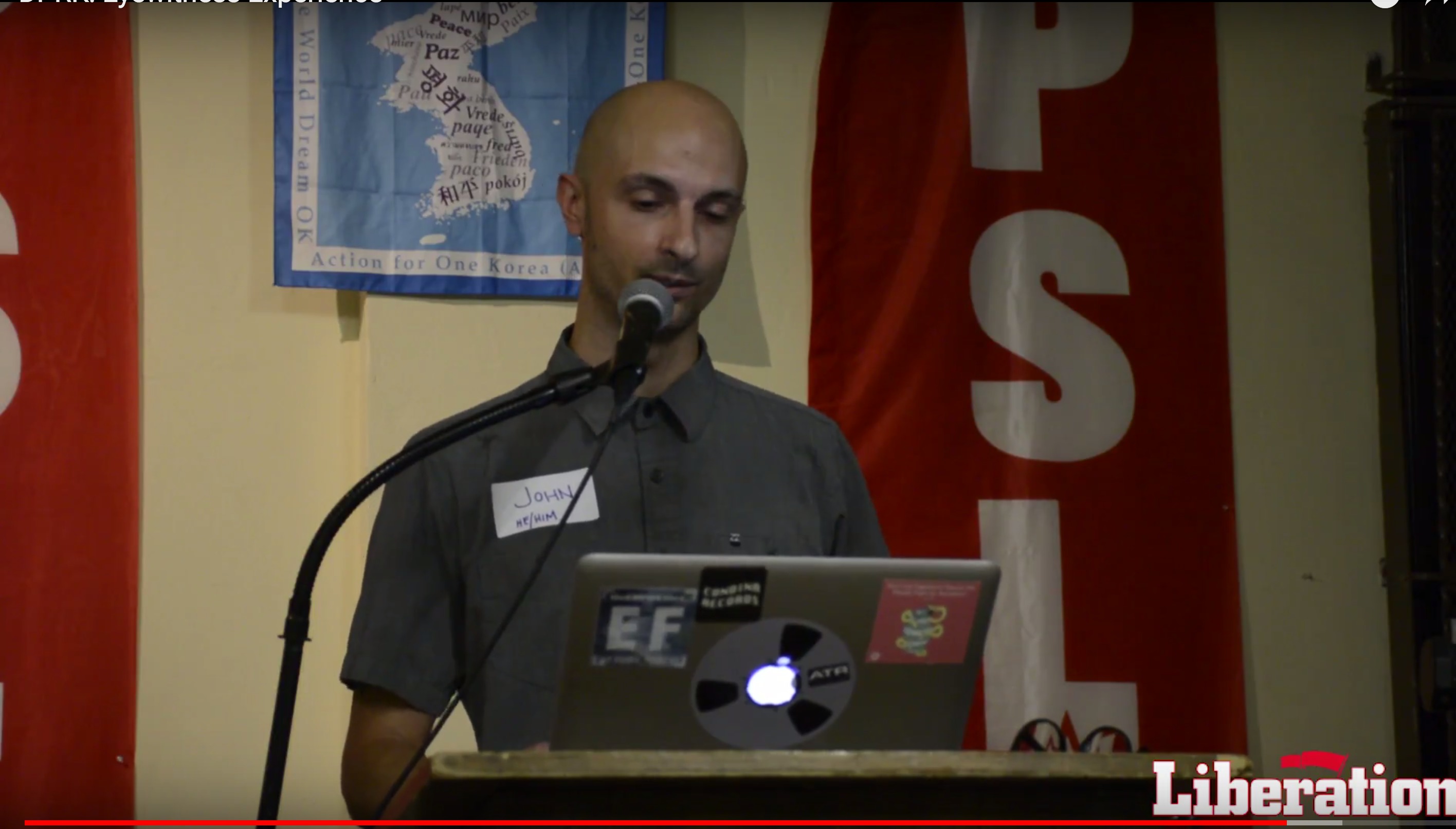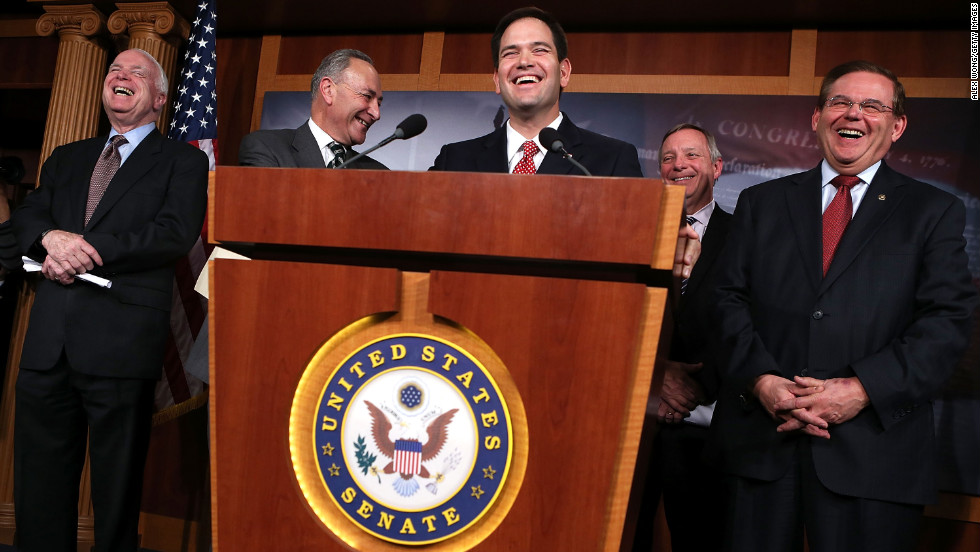On Aug. 6, 1945, in the final days of World War II, the U.S. military dropped an atomic bomb on Hiroshima, Japan. It killed 80,000 civilians instantaneously.
On Aug. 9, 1945 it dropped another atomic bomb on Nagasaki, Japan, killing another 100,000 civilians. In the following years, hundreds of thousands more died from the nuclear fallout and other after-effects.
 An early model of the Taepodong missile tested by North Korea, July 2006. Photo: Korean Central TV/Reuters |
In the 61 years since those bombs were dropped, the U.S. government—the only government to ever use these unimaginably destructive weapons—has repeatedly threatened to launch nuclear war on countries that resist the dictates of Washington.
Over the last six decades, successive U.S. regimes have spent trillions of dollars producing and perfecting its vast and lethal arsenal of nuclear weapons, which now consists of around 10,000 nuclear warheads.
U.S. declares right to first nuclear strike
Under the Bush administration, the Pentagon has adopted a policy of preemptive nuclear attack on non-nuclear and nuclear nations alike. In March 2006, the Bush administration reaffirmed this policy in an updated national security strategy.
 37,000 U.S. troops are stationed in South Korea, threatening the North and China. Photo: Kim Jae-Hwan/AFP |
The Bush administration has moved to increase the technological level of the U.S. nuclear weapons program. The Pentagon’s 2005 Doctrine of Joint Nuclear Operations calls for the development of a Robust Nuclear Earth Penetrator—popularly known as “bunker busters”—in order to attack deeply buried targets. This weapon is being developed specifically with Iran and North Korea in mind.
The Democratic People’s Republic of Korea (North Korea) and Iran have distinct histories and cultures, different political systems and contrasting economic systems. But they have one thing in common. Both have pursued paths of development independent of U.S. imperialism. This is the basis of the repeated U.S. threats against their sovereignty.
Considering the long history of U.S. governments making good on these threats, states in the Pentagon’s crosshairs have to prepare to defend themselves. Developing the ability to strike back against U.S. attacks is their best and only deterrent to war.
In this spirit, North Korea announced in February 2005 that it had successfully manufactured nuclear weapons.
The Bush administration, the Democratic Party and the corporate media would have workers in the United States believe that North Korea’s development of nuclear weapons somehow endangers the people of the world. They whip up racist campaigns portraying North Korean leaders—especially Kim Jong Il—as uncontrollable lunatics, who cannot be trusted with sophisticated weaponry. On June 4 in Singapore, Secretary of Defense Donald Rumsfeld reiterated that North Korea is a “rogue regime” that seeks to “intimidate its neighbors” with “ballistic missiles.”
In reality, the Bush administration is seeking to punish North Korea for its defiance of U.S. imperialism in Asia. North Korea found itself among Bush’s notorious “Axis of Evil,” because for over 50 years it has fought, condemned and countered U.S. desires in the region.
Target: the Korean revolution
The Korean revolution began as a war of resistance against Japanese colonialism. At the end of World War II, it established a workers’ state in the North—overturning capitalist property relations, providing free education and health care and setting the nation on a path of independent socialist development.
These gains came in spite of the carnage of the 1950-1953 U.S. war against Korea. For example, every building over one story in the capital city of Pyongyang was leveled in daily mass bombings. Three million Koreans were killed in that war.
The gains of the Korean revolution stood in clear contrast to the U.S.-backed South Korean military regime and the other U.S. client states in the region characterized by gross inequality and miserable living conditions.
In recent decades, the North Korean economy has suffered greatly due to the splintering and collapse of the socialist bloc, drought and the constant U.S. blockade. But the survival of the North Korean state, despite the hostile presence of 37,000 U.S. troops at its southern border, stands out as a forceful reminder of the region’s revolutionary tradition.
The U.S. goal is to weaken and isolate North Korea, open it up to the ravages of the world capitalist market and undo all the gains made through decades of socialist construction.
Escalating U.S. threats
In June, the Bush administration renewed its attacks against North Korea, demanding that it halt its ballistic missile program. Bush, Condoleezza Rice and others in the administration rushed to condemn North Korea’s planned testing of a longer-range missile as a “provocative act” that threatened “peace and stability” in the region. (Associated Press, June 28)
On June 21, the U.S. Navy moved warships off the coast of North Korea in order to “shoot down” any missile launched. Peter Rodman, assistant defense secretary for international security affairs, admitted, “We have a missile defense capability and North Korea was very much on our mind when we designed that capability.”
On June 22, William Perry and Ashton Carter—the secretary and under secretary of defense in the Clinton administration—published a report calling on Bush to launch an immediate military assault against North Korea for developing long-range missiles.
In recent months, the Pentagon has greatly increased the number of spy plane flights it conducts against North Korea. According to North Korean reports, U.S. planes flew 220 spy missions in June alone.
The North Koreans charged that the Pentagon began conducting its biennial war games with Pacific Rim allies on June 25. Far more than simply testing weapons, a main component of the joint exercises is to practice U.S. invasions of North Korea and China. These games simulate the use of nuclear weapons.
The date was a slap in the face to all Korean people. June 25, 1950, was the day that the Korean peninsula erupted in war. Within days, the U.S. military coordinated a 26-nation invasion under the flag of the United Nations.
Choosing June 25 as a day of coordinated “war games” targeting Korea reaches the zenith of provocation. Yet it is North Korea that is labeled “out of control” and provocative by the U.S. media!
At a June 29 joint press conference with Prime Minister Junichiro Koizumi of Japan in Washington, D.C., George Bush said, “You know, the leader of North Korea is just going to have to make a decision, does he want to be isolated from the world, or is he interested in being an active participant in kind of the nations of the world who care about their people and desire peace?”
Japan, still occupied by tens of thousands of U.S. troops 61 years after the end of World War II, is subservient to U.S. imperialism. In recent years, the Japanese and U.S. militaries have increased their coordination in the Pacific. On June 16, the Japanese parliament passed a law that serves as a precursor to economic sanctions against North Korea.
The U.S. government has had economic sanctions in place against the DPRK since 1951.
U.S. politicians talk about “dialogue,” “peace” and “stability in Northeast Asia,” but generals are simultaneously preparing for nuclear war in the region. This contradiction must be called what it is: a blatant double standard and an extreme form of imperial arrogance.
It is U.S. imperialism, not North Korea, which aims to provoke a war on the Korean Peninsula. While North Korea has repeatedly proposed peaceful reunification plans, the Bush administration aims to settle the stalemate of the Korean War—which is technically ongoing, due to the U.S. continued refusal to sign a peace treaty—with a full-scale counterrevolution in North Korea at any cost.
The people of North Korea have responded to U.S. threats by holding huge mass rallies all over the country. Defying the U.S. war games taking place that started that day, June 25 was celebrated in North Korea as the day “of struggle against U.S. imperialism.” The day commemorated the Korean civilians killed by U.S. and U.N. soldiers in the four-year Korean War.
At the June 25 rally in Pyongyang, Pang Chol Gap, chairman of the Pyongyang City People’s Committee remarked:
“The U.S. has persistently pursued its hostile policy to isolate and stifle the DPRK and provoke another war against it, keeping South Korea under its military occupation for more than 50 years.
“The U.S. is seriously mistaken if it thinks it can bring the Korean people to their knees and realize its ambition for domination and aggression by dint of its high-handed and arbitrary practices and force,” he said.






